If you plan to discover famous artworks in Amsterdam, then a popular square in the Amsterdam South district of the city is the place to go.
Museum Square is where you can find the Stedelijk Museum, dedicated to modern art, and the Rijksmuseum, the national museum of the Netherlands with an incredible collection of paintings.
Squeezed in between the Stedelijk Museum and the Rijksmuseum is the Van Gogh Museum.
This place is dedicated to Vincent van Gogh (1853-1890) and features the largest collection of van Gogh paintings in the world.
Established in 1973, it has become one of the most visited museums in the Netherlands with over 2 million yearly visitors. This just emphasizes what an incredible legacy the troubled Dutch artist left behind.
apart from paintings, you can also find numerous drawings and letters written by Vincent to his brother Theo and other people. There are also several paintings on display produced by van Gogh’s contemporaries.
In this article, you’ll discover some of the most famous paintings at the Van Gogh Museum in Amsterdam.
1. The Yellow House
- Date created: 1888
- Dimensions: 76 × 94 centimeters (28.3 × 36 inches)
The Yellow House is a painting by Vincent van Gogh that is alternatively known as “The Street.” It depicts the house at 2 Place Lamartine in Arles where the Post-Impressionist artist stayed for the majority of the time while he was living in Arles. He rented 4 rooms in the right wing of this building.
He used the ground floor as his studio and the left room on the second floor as his bedroom. The room with both shutters open was the guest room where Paul Gauguin stayed for several weeks in late 1888. The pink building in the utmost left part of the painting was a restaurant where he enjoyed his daily meals.
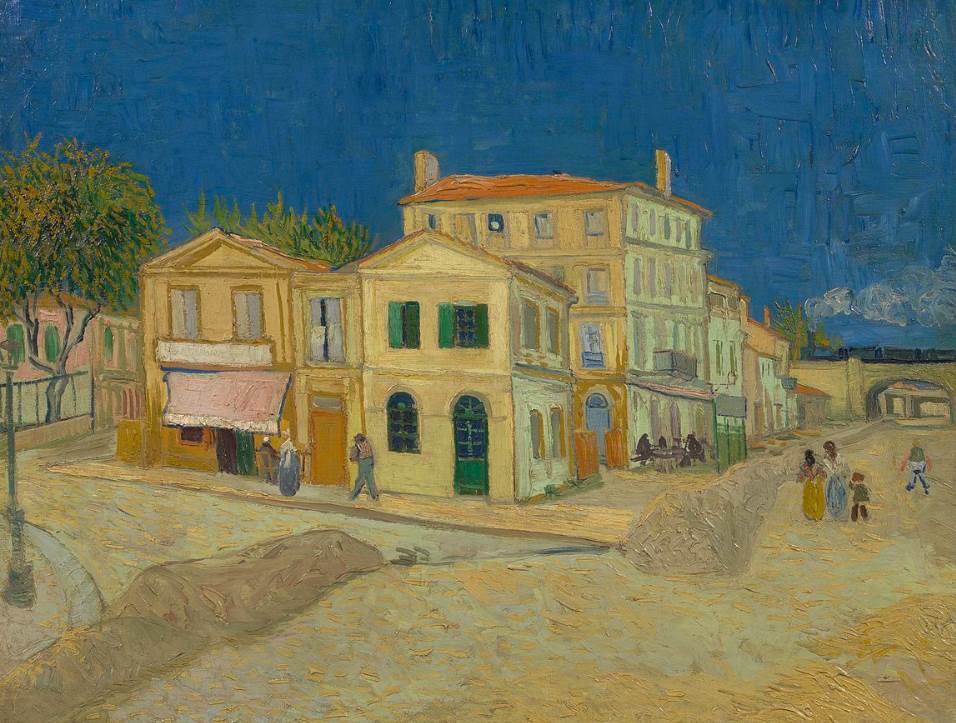
2. Bedroom in Arles
- Date created: 1888
- Dimensions: 72 × 90 centimeters (28.3 × 35.4 inches)
Bedroom in Arles is the title of three different paintings that depict Vincent van Gogh’s bedroom at the Yellow House. The painting at the Van Gogh Museum in Amsterdam is the first he produced and it was completed in October 1888. The other two versions were completed in April and the Summer of 1889.
Like most of his paintings, Vincent meticulously described all three paintings in letters to his brother Theo. He also included sketches along with these letters to provide a visual for Theo to see. It’s one of the paintings that never left the personal collection of the artist. It’s owned by the Vincent van Gogh Foundation and is on permanent loan to the museum.
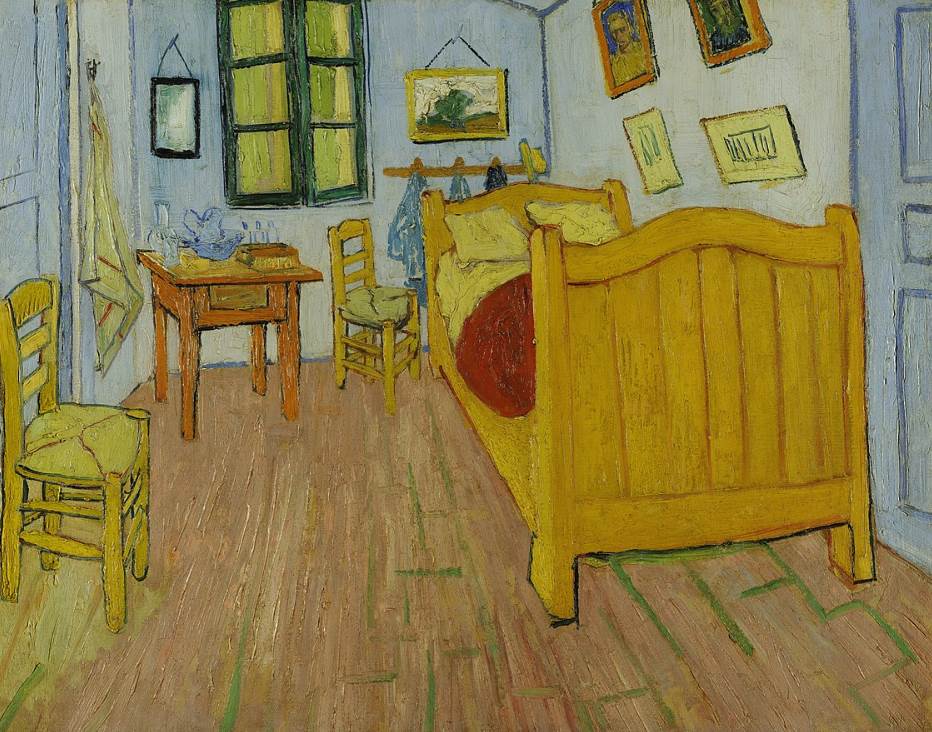
3. The Potato Eaters
- Date created: 1885
- Dimensions: 82 × 114 centimeters (32.3 × 44.9 inches)
The Potato Eaters is the title of a painting that van Gogh completed while he was living in Nuenen between 1883 and 1885. It depicts a family of farmers who is eating potatoes at their humble dinner table. It’s considered to be the ultimate masterpiece of his early period.
The painting isn’t just admired by art historians and critics due to its ra nature, but also by the artist himself. Vincent considered this to be his first successful work of art, a notion that adds another dimension to this fascinating painting. Vincent produced several studies of this work and also a lithograph.
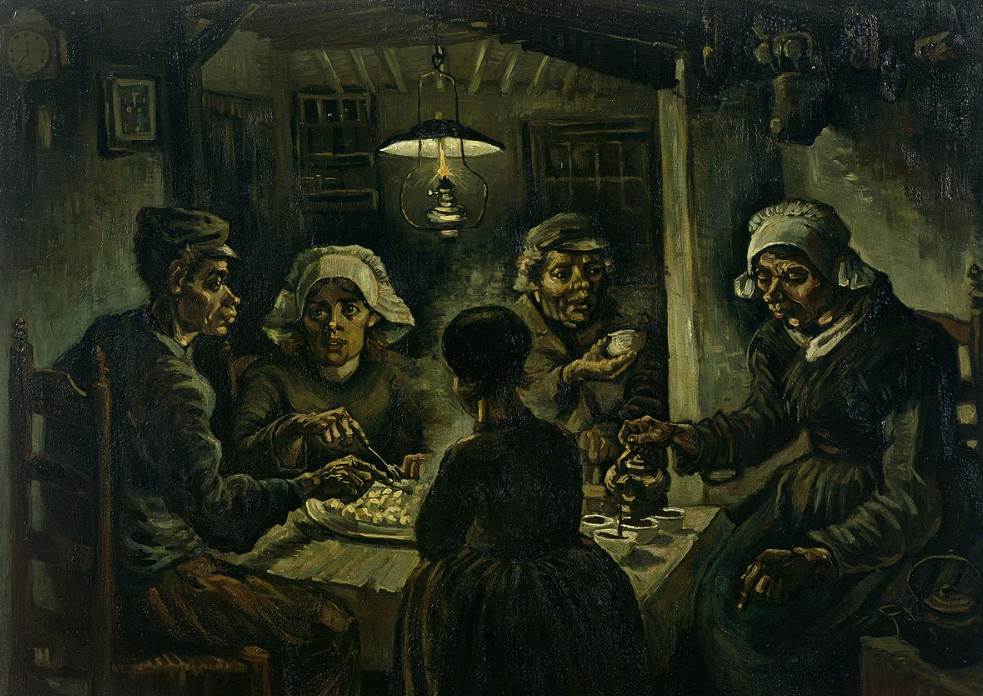
4. Sunflowers
- Date created: 1889
- Dimensions: 95 x 73 centimeters (37.4 x 28.7 inches)
Sunflowers is the title given to two series of paintings that depict these colorful flowers. He produced the first series while he was living with his brother Theo in Paris and the second while he was living at the Yellow House in Arles. The idea was to decorate the house in preparation for the visit of Paul Gauguin.
He completed the first 4 versions of the paintings in Arles in August 1888. He then went on to paint 3 so-called “repetitions” of these works. The painting at the Van Gogh Museum is a repetition of the 4th version that he initially created. The original 4th version is part of the collection of the National Gallery in London.
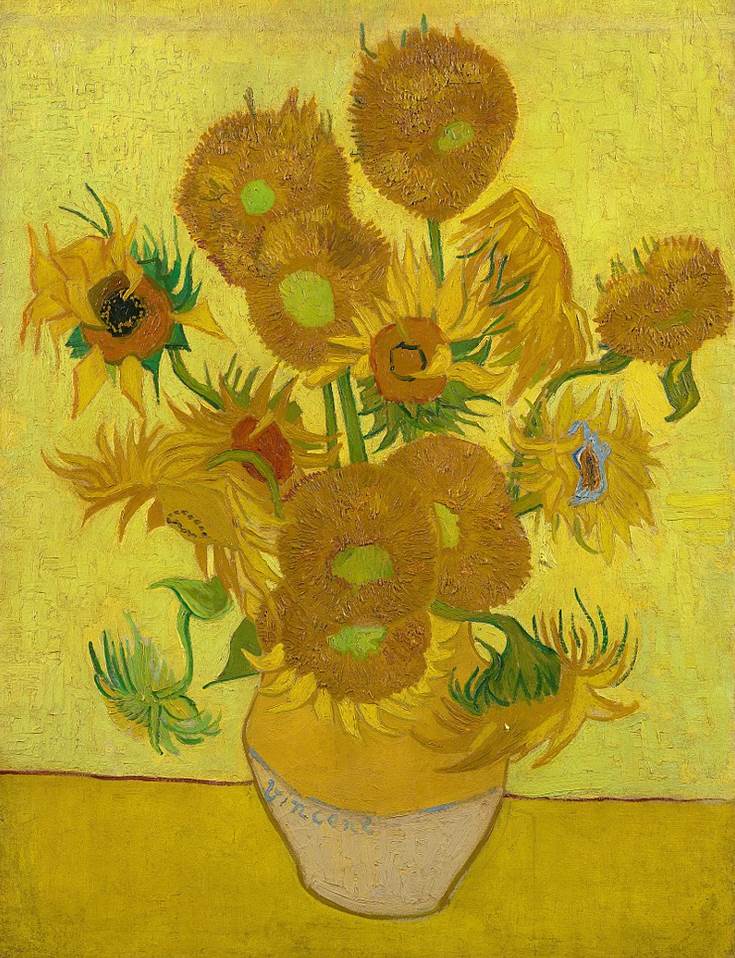
5. Irises
- Date created: 1890
- Dimensions: 92.7 x 73.9 centimeters (36.49 x 29.09 inches)
Irises is another depiction of a popular type of flower by Vincent van Gogh. It was completed during the final weeks of the artist’s stay at the mental asylum at Saint-Rémy-de-Provence. He stayed here for about a year following his mental breakdown during the visit of Paul Gauguin in late 1888.
This painting is not to be confused with the famous Irises that he completed in May 1889, a painting that is part of the collection of the Getty Museum in Los Angeles. That painting was sold for $53.9 million, the highest price paid for a painting at the time. The Van Gogh Museum painting is considered to be a study of color by the artist.
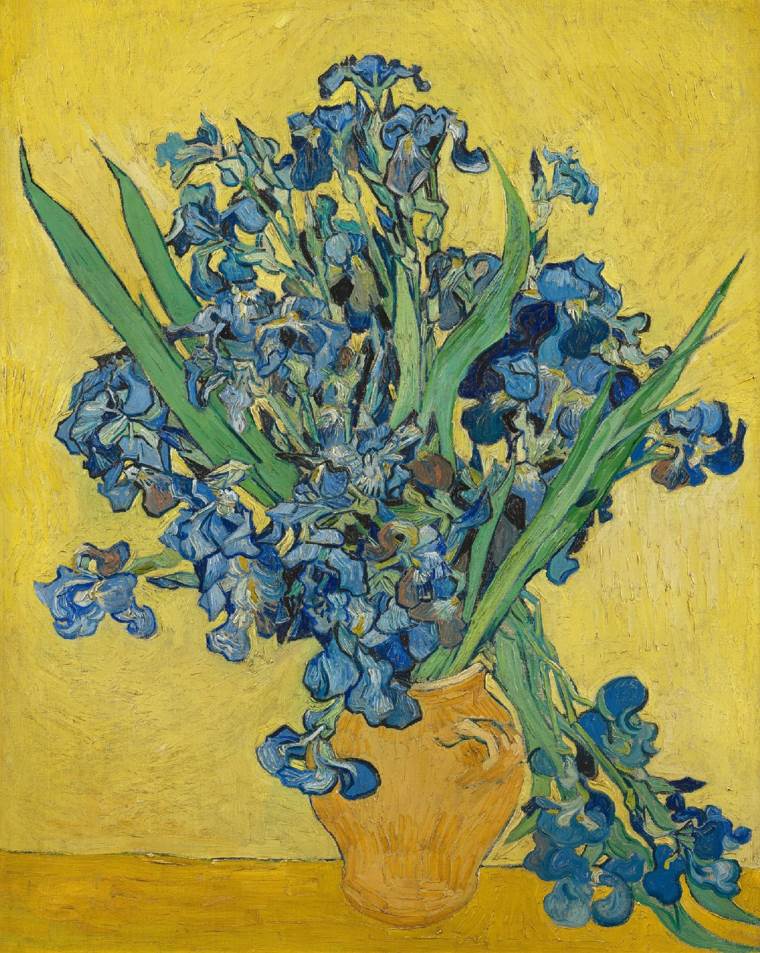
6. The Harvest at La Crau
- Date created: 1888
- Dimensions: 73 x 92 centimeters (28.7 x 36.2 inches)
The Harvest at la Crau with Montmajour in the background is commonly referred to as simply “The Harvest” and depicts the magnificent landscape around Arles, a small city in the south of France. The rocky outcrop in the background is named Montmajour and we can also distinguish Montmajour Abbey.
The painting depicts distinctive yellow fields during the harvest season in June 1888 against the backdrop of the blue sky near the Côte d’Azur. You can literally feel the excruciating heat of the sun. It was Vincent van Gogh’s statement about the hard labor that farmers had to do in order to harvest their crops.

7. Almond Blossoms
- Date created: 1890
- Dimensions: 73.5 × 92 centimeters (28.9 × 36 inches)
Almond Blossoms is the title of yet another series of paintings that depict the same subject. He completed the first series in Arles and the second during his stay at the asylum in Saint-Rémy. Van Gigh always enjoyed painting flowering trees as they somehow calmed his turbulent mind down.
The painting has a remarkable place in Van Gogh’s oeuvre because he painted it in celebration of his newly born nephew and his namesake, the son of his brother Theo and his wife Johanna Bonger. We can clearly see Vincent’s admiration for Japanese art in this remarkable painting.
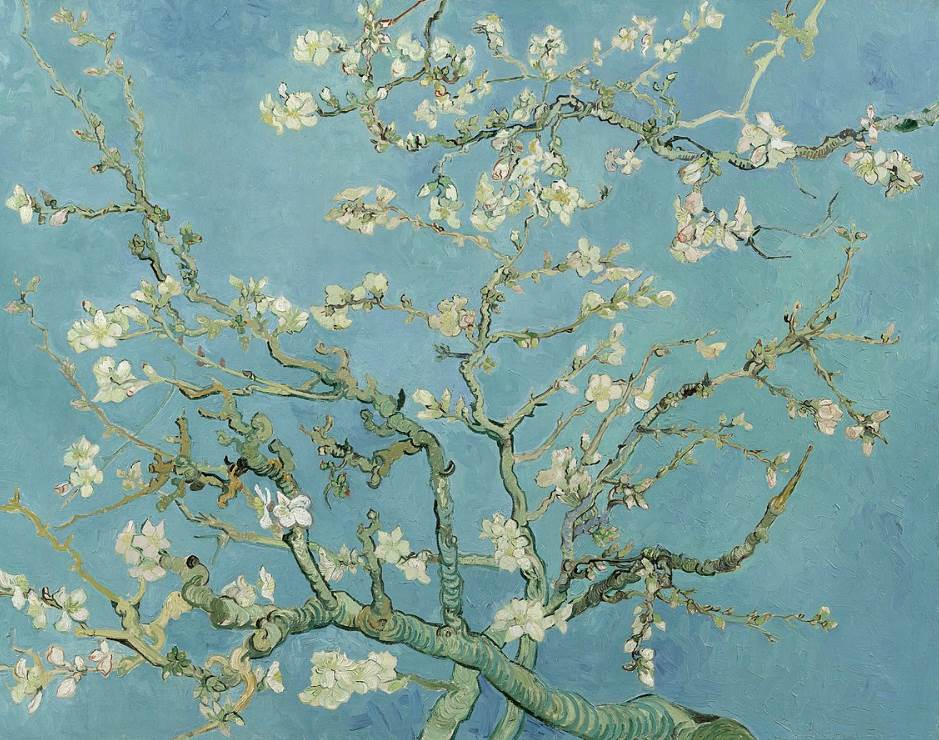
8. Wheatfield with Crows
- Date created: 1890
- Dimensions: 50.2 × 103 centimeters (19.8 × 41 inches)
Wheatfield with Crows is a painting that Vincent van Gogh completed during the final weeks of his life in July 1890. According to the letters to his brother Theo, the painting was finished around July 10. This means that he painted several other works after this one.
The painting depicts a wheatfield near the town of Auvers-sur-Oise where he spent the final months of his life. He had moved to this suburb on the northwestern outskirts of Paris to be closer to his doctor Paul Gachet. The gloomy context of this painting with crows and a road that apparently leads to nowhere might have hinted at the dark thoughts he had at the time.
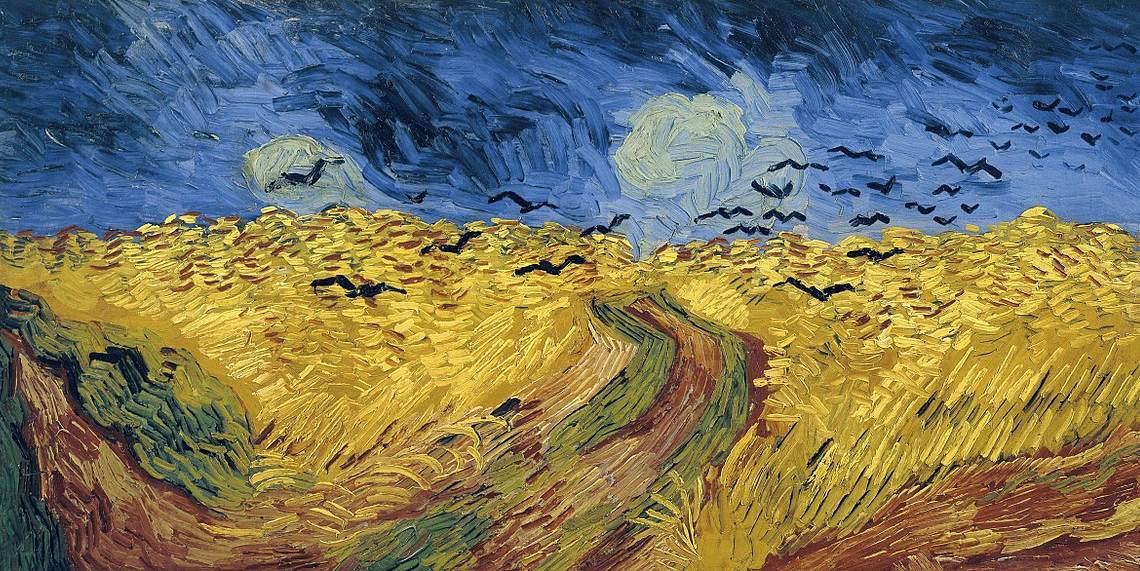
9. Tree Roots
- Date created: 1890
- Dimensions: 50 × 100 centimeters (19.7 × 40.6 inches)
Tree Roots is another painting that was completed in July 1890, shortly before Vincent took his own life in a field near Auvers-sur-Oise. This remarkable work of art is another candidate to be the final painting that he ever produced, although this remains uncertain until today.
The exact location where Vincent painted this work has been determined by researchers of the Institut Van Gogh and the Van Gogh Museum. They concluded that Vincent set up his easel about 150 meters (492 feet) away from the Auberge Ravoux where he stayed during these final weeks of his life.
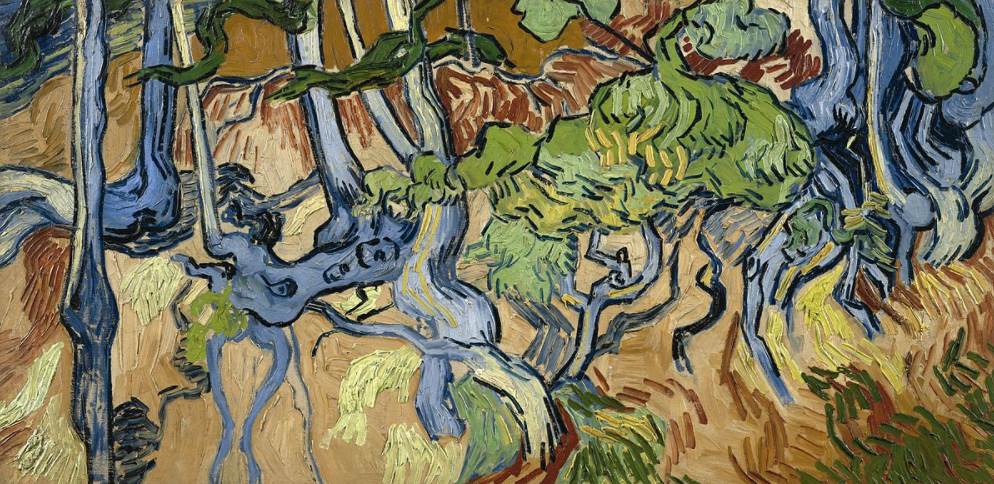
10. The Painter of Sunflowers – Paul Gauguin
- Date created: 1888
- Dimensions: 73 × 91 centimeters (28.7 × 35.8 inches)
The Painter of Sunflowers is a painting by Paul Gauguin that is on display at the Van Gogh Museum in Amsterdam. It was completed in December 1888 during a time when Gauguin and Vincent were frequently quarreling with each other. This led to Vincent’s mental breakdown and the cutting off part of his left ear a few weeks later.
Vincent had the great idea of establishing an art colony in Arles. Paul Gauguin was a strong personality and this often clashed with the equally strongminded Vincent. When he first laid eyes upon this portrait of himself, he didn’t like it one bit and claimed Gauguin attempted to depict him as a madman. He later recounted that he was merely tired at the time this portrait was completed.


